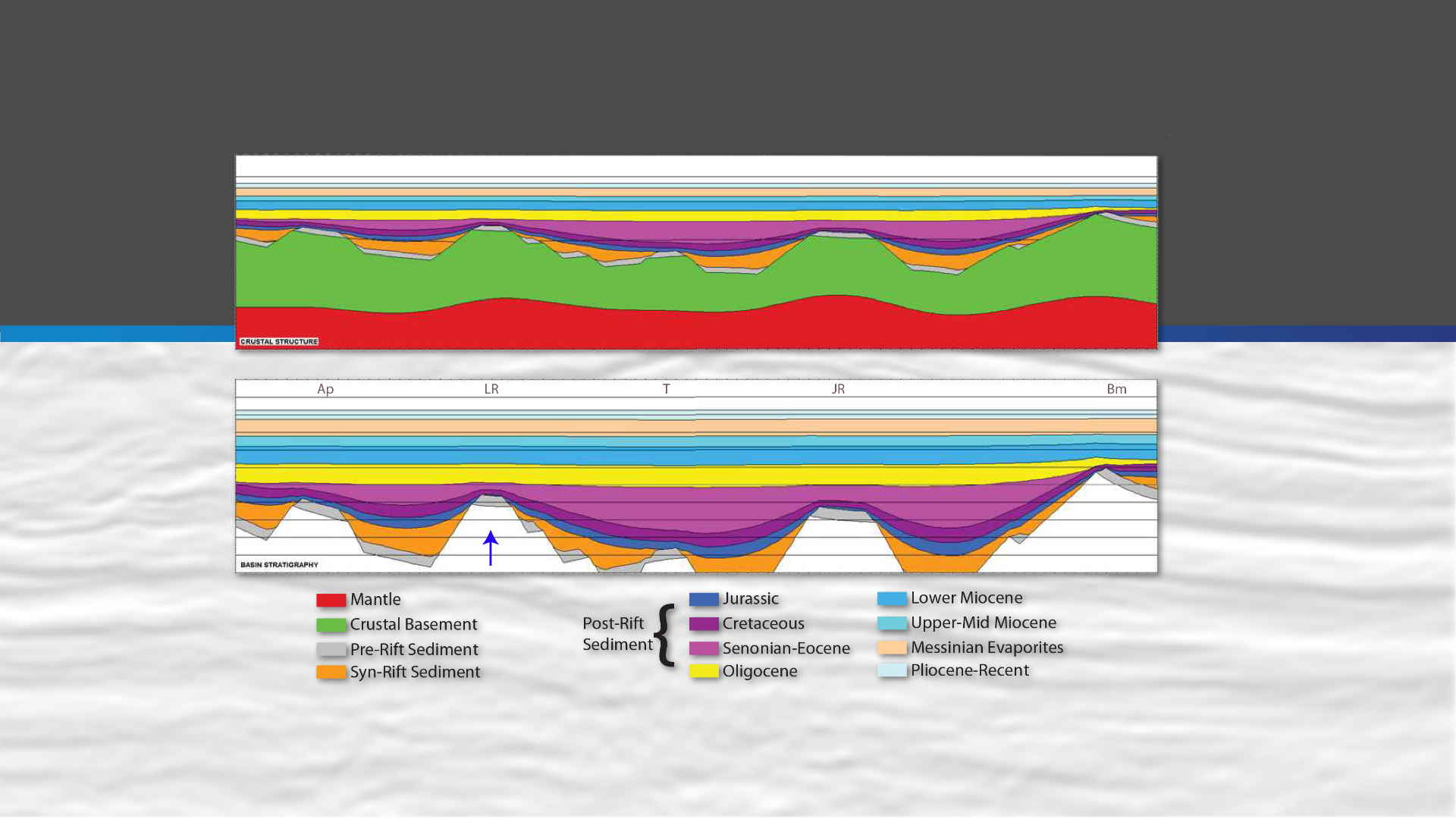Precision Software & Services for the Energy Industry
STRETCH
STRETCH is a forward-modelling tool designed to simulate whole-basin and regional structural evolution. It models both the syn-rift fault-block development and post-rift subsidence phases, accommodating multiple rift episodes. By incorporating whole-lithosphere extension, fault-block geometry, isostatic balance, and thermal perturbation over time, STRETCH provides a comprehensive analysis of basin formation and evolution.
Key Features

Since 1990 we have been working with Prof. Nick Kusznir (Liverpool University) on understanding and modelling the processes of continental extension. Together we have developed techniques and a suite of software products (STRETCH, FLEX-DECOMP and HEAT) for the large-scale analysis of rift basins and continental margins. In a commercial context these are used mainly to assist frontier exploration projects.
Stretch takes cross-section geometries, typically as seen on seismic data, and produces 2D structural/stratigraphic models, predicting fault-block geometries, footwall uplift and erosion, subsidence history and rift-related heat-flow history.

Model Basin Histories
Make quantitative predictions about basin development, either for isolated rift events or for
multiple rift events separated by periods of thermal subsidence. Complete structural and
stratigraphic models are produced.
Understanding Fault-Block
Structure
Detailed models of fault-block structure are produced which can be matched against seismic
observations.
Uplift, Erosion and
Burial
Predict fault-related footwall uplift within and adjacent to the basin, identifying sediment
source areas and providing estimates of erosion and sediment supply. Model subsequent burial
histories through the post-rift interval, including the effects on stratigraphy of compaction
and loading.

Magnitude of Stretching and
Thermal Consequences
Calculate structurally-constrained estimates of
beta-stretching-factor and the associated heat-flow anomaly through time. These results can be
carried forward as input to further thermal modelling of the basin (HEAT).
Integrate with Gravity
Data
Forward modelling the gravity field allows calibration against measured data
and assessment of the contributions from the various separate lithosphere components.
Interpretation
QC
Isostatically-balanced cross-sections can help to validate and QC seismic
interpretation, by highlighting structural features that are admissible and also those that
aren't. Stretch models also help you to understand the geodynamic processes which have impacted
the development of your basin, thus reducing exploration uncertainty.